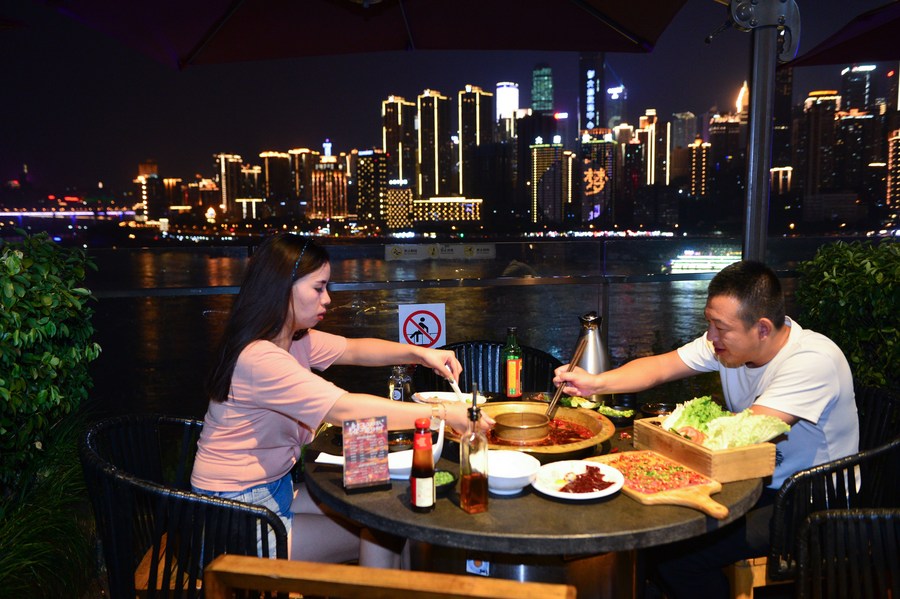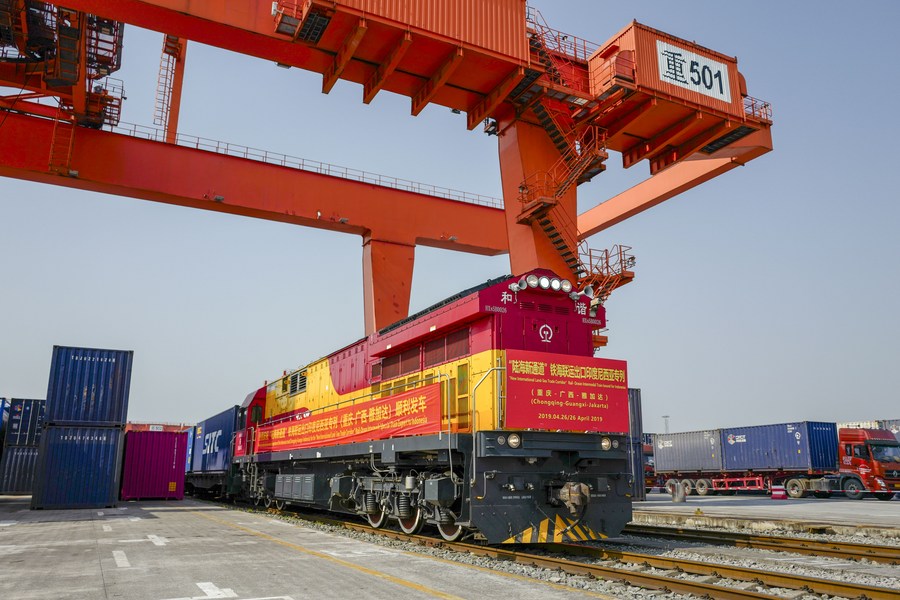Hotpot, a traditional Chinese cuisine, is getting more and more cosmopolitan as foods from all over the world are gathering in China's hotpot capital in a more efficient way.
CHONGQING, Dec. 23 (Xinhua) -- Prakash Nopo, a 47-year-old Indian farmer, is busy organizing farmers as they pick chilies on his farm in India's southern state of Andhra Pradesh.
After cleaning, drying and packing, the chilies will be shipped from Chennai Port in India to Qinzhou Port in south China's Guangxi Zhuang Autonomous Region and then sent by rail to southwest China's Chongqing Municipality.
Chongqing is one of the birthplaces of the dish known as "hot pot", which is widely popular for its spicy flavor. The China Cuisine Association credited it as China's hot pot capital. Indian chilies help improve the spiciness of Chongqing hot pot while keeping costs low.
Hot pot allows diners to cook almost any food in a boiling, often spicy, pot. The most common ingredients put into the pot include thinly sliced lamb or beef, offal, seafood and vegetables.

People enjoy a riverside hotpot dinner in Nan'an District of southwest China's Chongqing Municipality, Aug. 17, 2019.(Xinhua/Yin Dongxun)
Indian chili is similar in price to Chinese chili, but it is spicier. So when using Indian chili instead of Chinese chili, the same degree of spiciness can be accomplished by using one-third of the amount.
India is one of the world's largest chili growers. About 60 percent of India's chili peppers, or about 200,000 tonnes, is exported to China annually, 60 percent of which goes to southwest China, where Chongqing is located.
Since 2017, exports of Indian chili to China have increased significantly, driving the export price to more than double, Nopo said. His planting area has expanded by 20 percent to 16 hectares over the past three years.
"My plantation income has increased by more than 40 percent, and the average income of more than 30 farmers working on the plantation has increased by about 20 percent," he told Xinhua in an online interview.
The opening of a new logistics channel helped bring more Indian chilies to Chongqing hot pot. In September 2017, the New International Land-Sea Trade Corridor was opened to connect Chongqing and other inland regions in western China with Southeast and South Asia.
Compared with traditional transport routes, the new service takes seven days fewer to bring Indian chili to Chongqing, with the cost for each container lower by about 2,000 yuan (about 306 U.S. dollars).

The land-sea freight train of the New International Land-Sea Trade Corridor heading for Indonesia waits to depart in southwest China's Chongqing, April 26, 2019. (Xinhua/Liu Chan)
"Despite the COVID-19 pandemic, our Indian chili imports have grown this year with the help of the New International Land-Sea Trade Corridor," said Song Weijie, general manager of an importer in the eastern Chinese city of Xiamen.
Hot pot originated in the late Ming Dynasty (1368-1644), with its ingredients consisting mainly of local animal viscera.
However, these days, foods from all over the world can be found in Chongqing hot pot, including Spanish black pork, German butter and New Zealand tripe, said Brandon Berardo, a 25-year-old American who works for the international business department of Chongqing Dezhuang Industrial (Group) Co., Ltd., a hot-pot chain operator.
Some foods are imported because they are in short supply in the domestic market, while others are to cater to changes in people's consumption styles, Berardo said.
For Wang Dayu, a 64-year-old man in Chongqing, the most classical ingredients in the hot pot have long been some animals' inside stuff like beef omasum, pork aorta and duck intestine. Now he also wants to have a taste of foreign foods.
"In the past, there were no foreign foods on hot pot menus and even if there were, we also could not afford them," said Wang. "Now they are already here and we can also afford them."

Customers enjoy hotpot at a restaurant in Chengdu, southwest China's Sichuan Province, March 21, 2020.(Xinhua/Li Mengxin)
The growing abundance of hot pot ingredients reflects the continuous opening-up to the outside world of China, a nation that has a per capita gross domestic product of over 10,000 U.S. dollars and a middle-class population of 400 million.
Chongqing, an inland city, is now better connected to the world through such international logistics channels as the New International Land-Sea Trade Corridor, the China-Europe freight-train service and the country's longest waterway, the Yangtze River.
Foods from all over the world arrive in the city in an efficient and fast way, and are gathered in hot pot.
The world's second-largest economy has repeatedly declared that its doors will not be closed, but will only be opened wider.
More international foods are expected to join the hot pot, and more global goods will enter the vast Chinese market, which is as open and inclusive as the hot pot. ■



